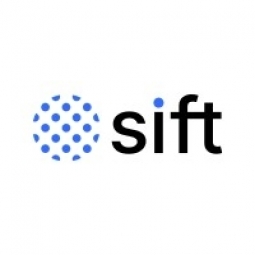公司规模
Large Corporate
地区
- America
国家
- United States
- Canada
产品
- ChowNow online ordering platform
- Sift
- Sift Workflows
- Sift Insights
技术栈
- Online ordering system
- Fraud detection system
实施规模
- Enterprise-wide Deployment
影响指标
- Cost Savings
- Revenue Growth
技术
- 应用基础设施与中间件 - 数据交换与集成
适用行业
- 食品与饮料
适用功能
- 商业运营
- 销售与市场营销
用例
- 欺诈识别
- 供应链可见性(SCV)
服务
- 系统集成
关于客户
ChowNow is a platform designed to help restaurants meet growing customer demands for faster, easier ways to order their meals. They create online ordering channels on both web and mobile, so their growing base of 9,000 restaurant customers can compete and win in an increasingly digital world. With ChowNow’s platform, restaurants streamline pickup & delivery and accept more orders than ever before. The company's goal is to make online ordering easy, so restaurants can focus on what they do best: cooking delicious food and connecting with their customers.
挑战
ChowNow, an online ordering platform for restaurants, was facing a growing problem of fraud. As the business expanded, so did the losses from chargebacks, which had grown to 1% of revenue. Fraudsters were actively sharing tips on how to defraud ChowNow, and certain locations like Miami, Atlanta, New York, and Chicago emerged as significant sources of fraud. This situation was discouraging growth in large markets. The company was spending an increasing amount of time fighting chargebacks, and was considering hiring a full-time team to tackle the problem. As a growing business, ChowNow didn’t want to restrict sales or spend too much on fraud operations, but couldn’t continue operating with growing revenue loss.
解决方案
ChowNow turned to Sift, a fraud detection solution, and tasked two engineers with the integration. It took one month to get set up, and they saw results as soon as it was implemented. Sift was able to pick up on repeat offenders and catch fraudsters who previously had gotten through. Shortly after integration, they set up Workflows, Sift’s automation feature, which enabled them to take action on orders in real-time, a critical part of mitigating risk for their on-demand business. They also used Workflows to build logic incorporating the riskiness of various regions, so they could easily adjust acceptance rates without affecting order volume from good locations. ChowNow also uses Sift Insights, a reporting capability, to monitor order growth as well as block rates and chargeback rates.
运营影响
数量效益

Case Study missing?
Start adding your own!
Register with your work email and create a new case study profile for your business.
相关案例.

Case Study
The Kellogg Company
Kellogg keeps a close eye on its trade spend, analyzing large volumes of data and running complex simulations to predict which promotional activities will be the most effective. Kellogg needed to decrease the trade spend but its traditional relational database on premises could not keep up with the pace of demand.

Case Study
HEINEKEN Uses the Cloud to Reach 10.5 Million Consumers
For 2012 campaign, the Bond promotion, it planned to launch the campaign at the same time everywhere on the planet. That created unprecedented challenges for HEINEKEN—nowhere more so than in its technology operation. The primary digital content for the campaign was a 100-megabyte movie that had to play flawlessly for millions of viewers worldwide. After all, Bond never fails. No one was going to tolerate a technology failure that might bruise his brand.Previously, HEINEKEN had supported digital media at its outsourced datacenter. But that datacenter lacked the computing resources HEINEKEN needed, and building them—especially to support peak traffic that would total millions of simultaneous hits—would have been both time-consuming and expensive. Nor would it have provided the geographic reach that HEINEKEN needed to minimize latency worldwide.

Case Study
Energy Management System at Sugar Industry
The company wanted to use the information from the system to claim under the renewable energy certificate scheme. The benefit to the company under the renewable energy certificates is Rs 75 million a year. To enable the above, an end-to-end solution for load monitoring, consumption monitoring, online data monitoring, automatic meter data acquisition which can be exported to SAP and other applications is required.

Case Study
Coca Cola Swaziland Conco Case Study
Coco Cola Swaziland, South Africa would like to find a solution that would enable the following results: - Reduce energy consumption by 20% in one year. - Formulate a series of strategic initiatives that would enlist the commitment of corporate management and create employee awareness while helping meet departmental targets and investing in tools that assist with energy management. - Formulate a series of tactical initiatives that would optimize energy usage on the shop floor. These would include charging forklifts and running cold rooms only during off-peak periods, running the dust extractors only during working hours and basing lights and air-conditioning on someone’s presence. - Increase visibility into the factory and other processes. - Enable limited, non-intrusive control functions for certain processes.

Case Study
Temperature Monitoring for Restaurant Food Storage
When it came to implementing a solution, Mr. Nesbitt had an idea of what functionality that he wanted. Although not mandated by Health Canada, Mr. Nesbitt wanted to ensure quality control issues met the highest possible standards as part of his commitment to top-of-class food services. This wish list included an easy-to use temperature-monitoring system that could provide a visible display of the temperatures of all of his refrigerators and freezers, including historical information so that he could review the performance of his equipment. It also had to provide alert notification (but email alerts and SMS text message alerts) to alert key staff in the event that a cooling system was exceeding pre-set warning limits.

Case Study
Coca-Cola Refreshments, U.S.
Coca-Cola Refreshments owns and manages Coca-Cola branded refrigerators in retail establishments. Legacy systems were used to locate equipment information by logging onto multiple servers which took up to 8 hours to update information on 30-40 units. The company had no overall visibility into equipment status or maintenance history.



